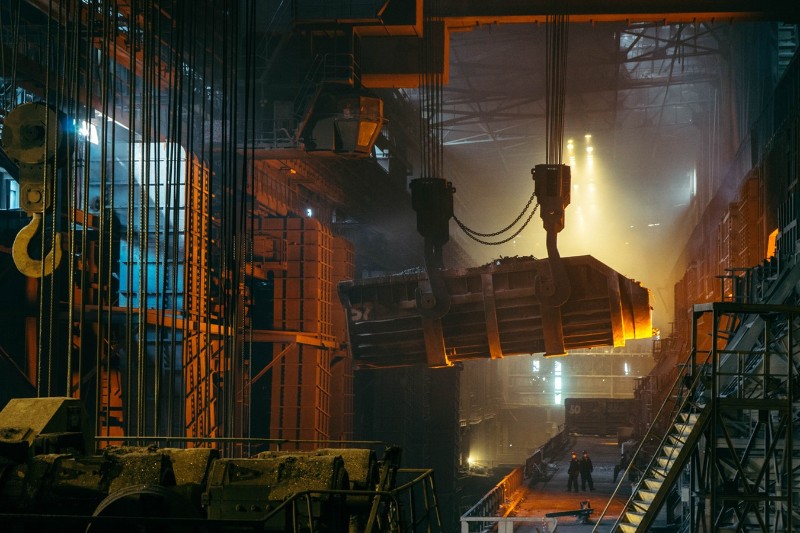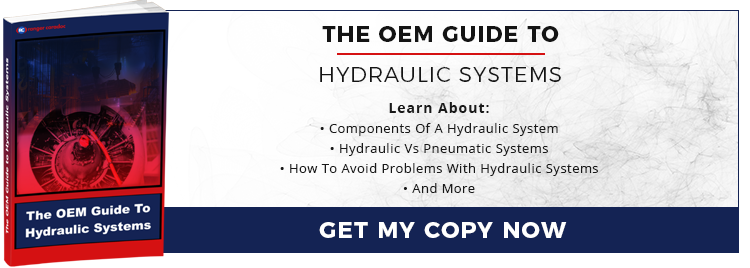
Of all the challenges facing manufacturers utilising hydraulic systems, hydraulic cylinder drift is one of the most problematic. In this article we explain the causes of hydraulic cylinder drift and easy ways you can troubleshoot it.
Hydraulic Lock & Hydraulic Drift
Hydraulic drift is literally the process where a cylinder ‘drifts downwards’ from its usual position, being unable to hold a load at mid stroke position. This is the result of internal leakage around the piston, but the specific process whereby drift occurs is worth looking at in further detail.
Hydraulic cylinder drift is a risk whenever there is unequal pressure on each side of the piston. If the rod seal leaks, pressure around the piston will equalise, leading the cylinder to become hydraulically locked. After this happens, the piston will be immobilised until such time as hydraulic fluid seeps out of the cylinder through the piston or rod seal, at which point drift occurs. A cylinder may drift towards either the extend or retract position.
Diagnosing Hydraulic Drift
Hydraulic cylinder drift is diagnosed through pressure testing under controlled conditions. There are three ways to determine potential hydraulic cylinder drift:
1) Rod Seal Leak
When the rod seal is compromised, the negative pressure vacuum on the piston side will dissipate and the piston rod will quickly become immobilised as pressure equalises throughout the cylinder.
2) Piston Seal Leak
A leaking piston seal may cause hydraulic cylinder drift, but this is not inevitable. So long as the ports are intact and the cylinder is completely full of hydraulic oil, the cylinder will maintain its load – until a leak occurs at the rod seal.
3) Pressure Gauge Readings
Even if no fluid leak is detectable, you can detect hydraulic drift by using the pressure gauges on the cylinder.
Leakage of hydraulic fluid leads to a reduction in the effective area of the cylinder. Because of the increased pressure on the rod side, the pressure in the piston side must increase in order to maintain the same load. The equalisation pressure can be calculated by referring to the piston side pressure (before leak) compared to the pressure on the rod side. For example, if the rod side pressure is 0 psi and the piston side pressure is 2000 psi, equalisation will occur at 3000 psi.
Once pressure is equalised, further drift is impossible and hydraulic lock re-occurs – until more hydraulic fluid leaks away. However, some port relief valves do not allow a cylinder to reach equal pressure because they are set at a lower pressure level, e.g. 2500 psi in our case. This means that drift will continue to occur as soon as overall pressure reaches 2500 psi.
Keeping a close eye on the cylinder pressure gauges during testing will help you determine whether or not cylinder drift or lock are likely.
Preventing & Resolving Hydraulic Drift
Once diagnosed, hydraulic cylinder drift can be rectified by replacing the faulty seals. It isn’t possible to completely eliminate the risk of hydraulic drift, although using correctly sized, high quality seals will make leaks less likely.
Furthermore, in two circumstances hydraulic drift will not be an issue:
- Double rod hydraulic cylinders – where the alternating pressure is equal on both sides of the cylinder, and;
- Double acting cylinders on which a load is hanging.
Hydraulic cylinder drift is a real issue in engineering but can be minimised with the right choice of components for your systems. Chat to us about the best cylinders for your specific application. A free brochure is available to download here, and our advisers are happy to chat in person by calling 01299 896 953.







